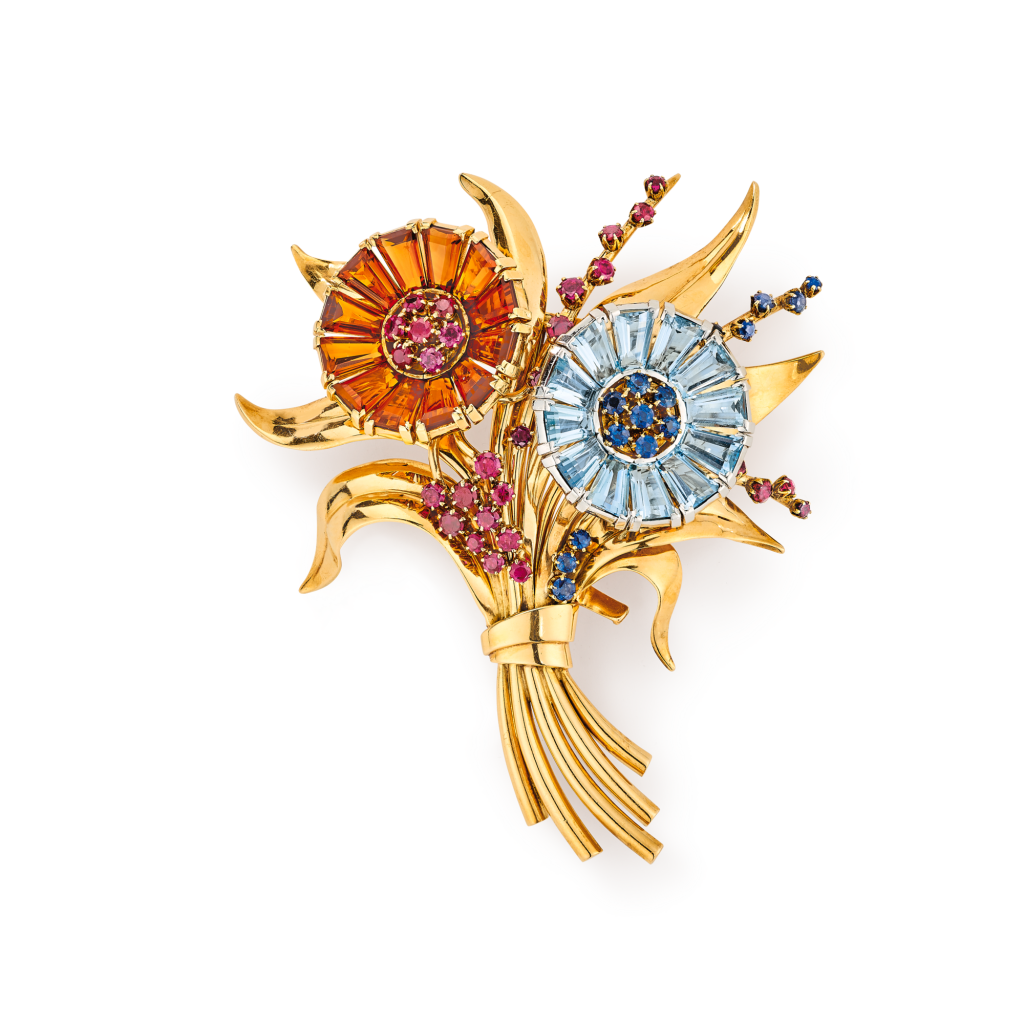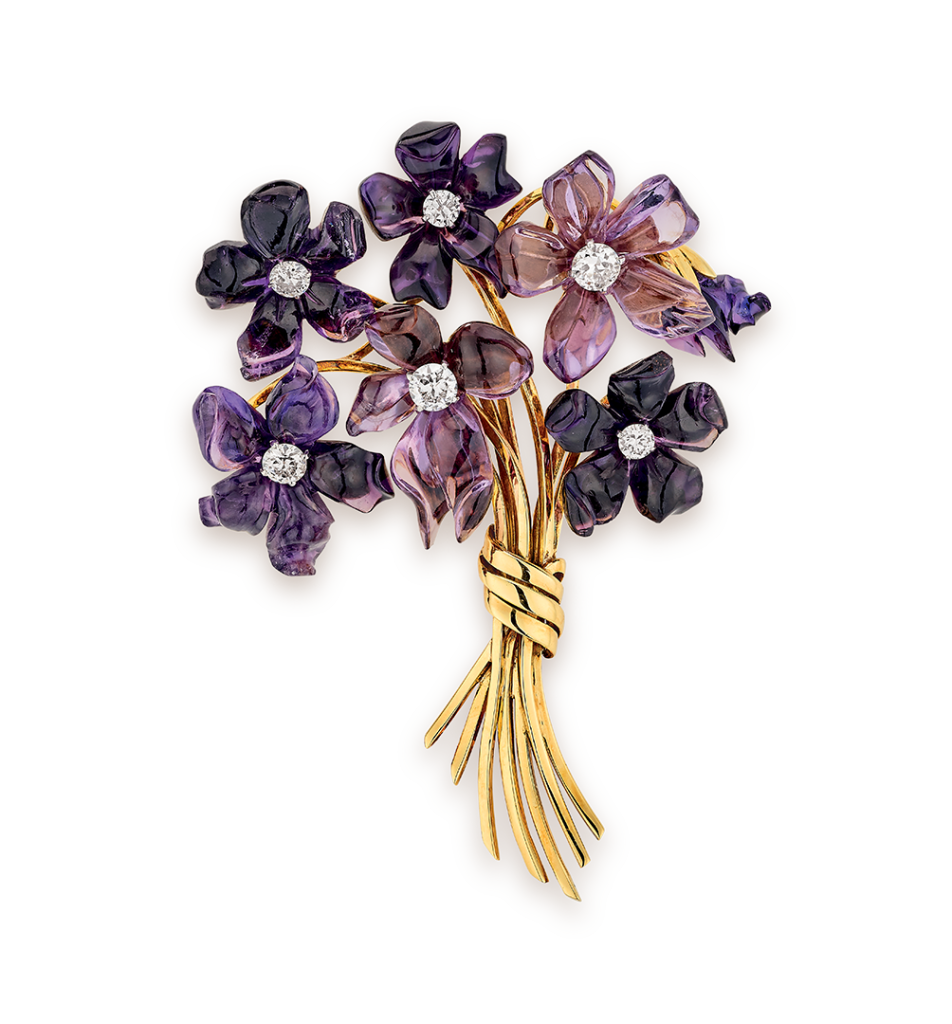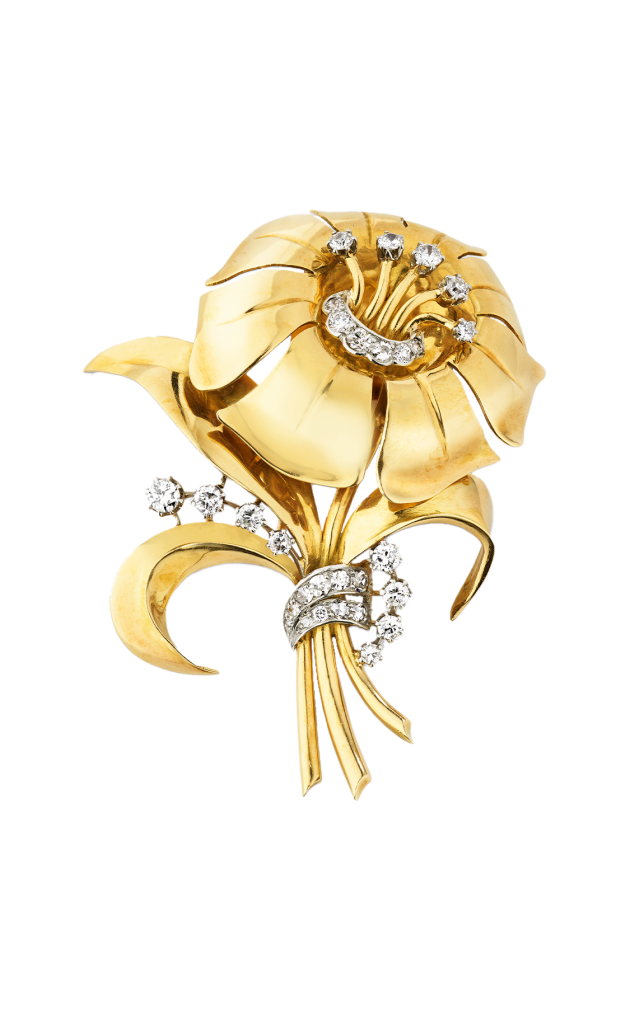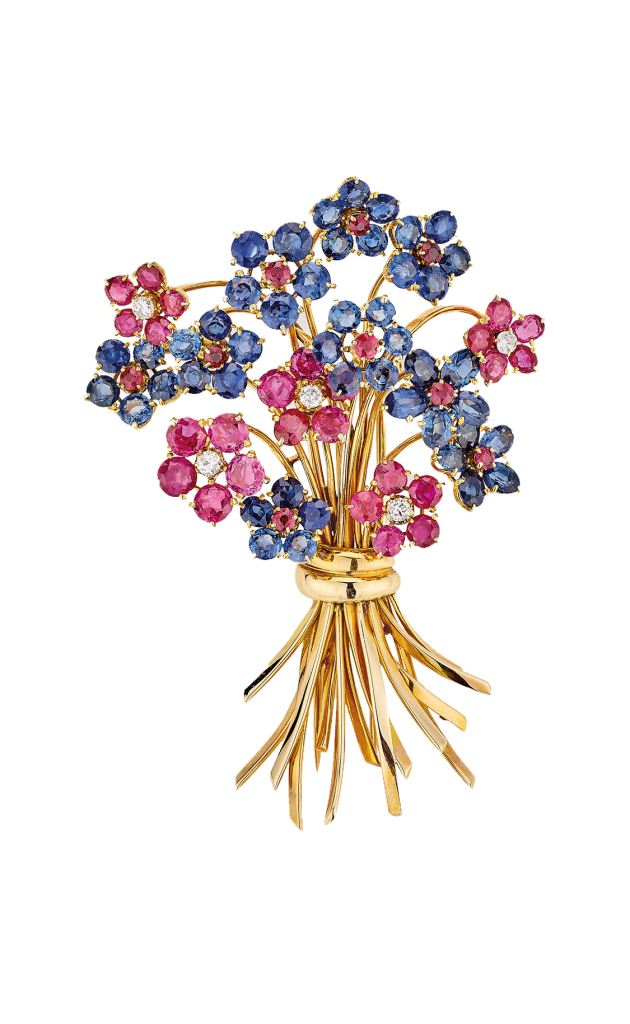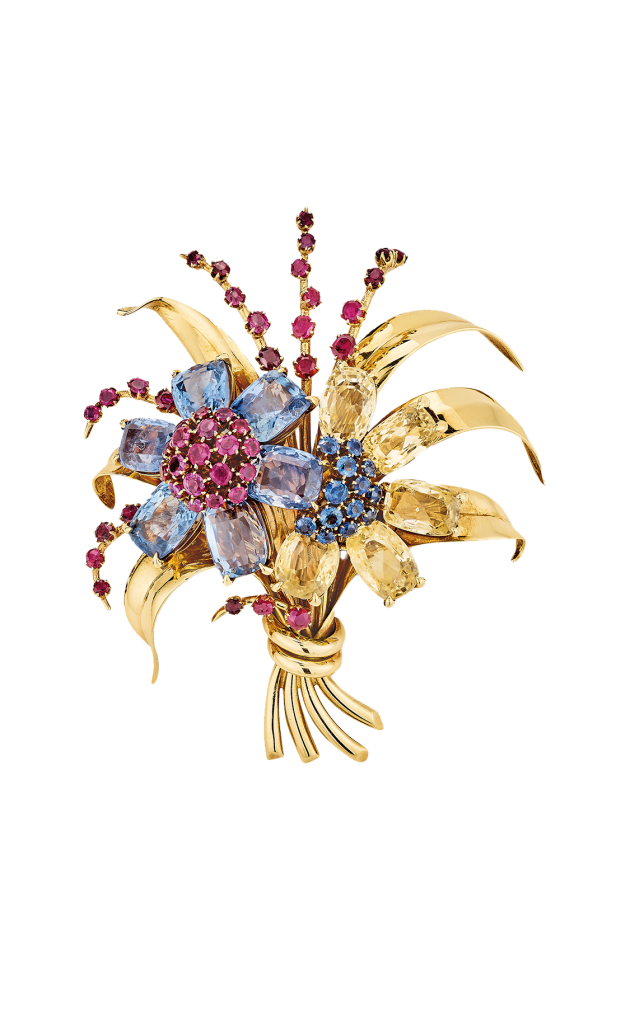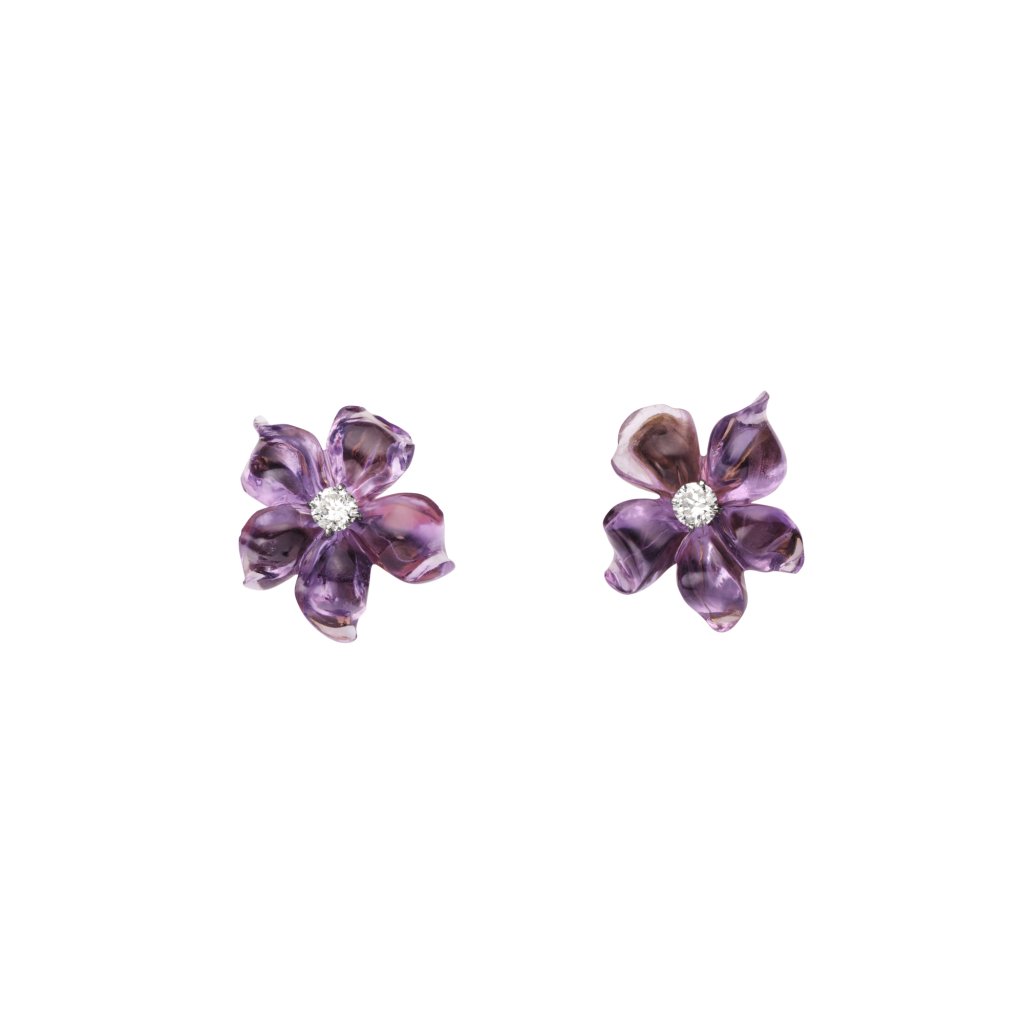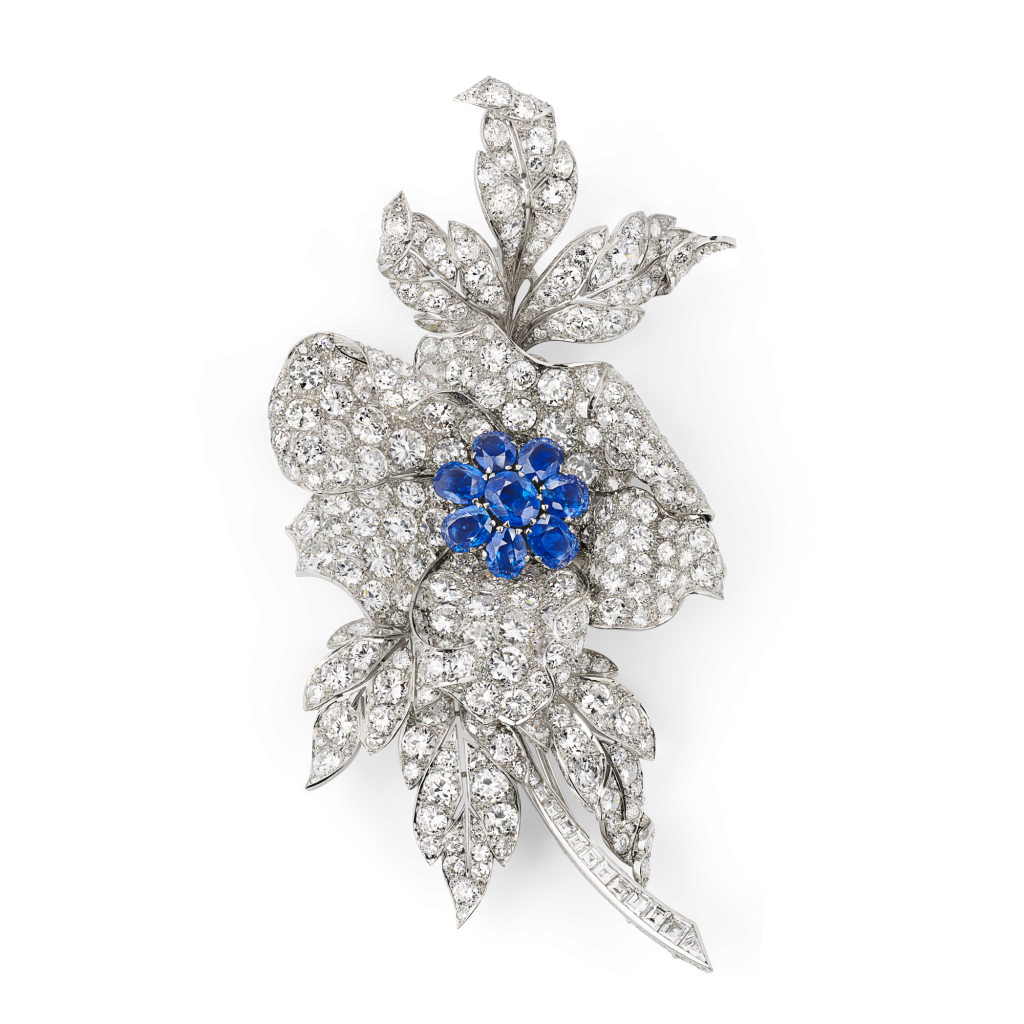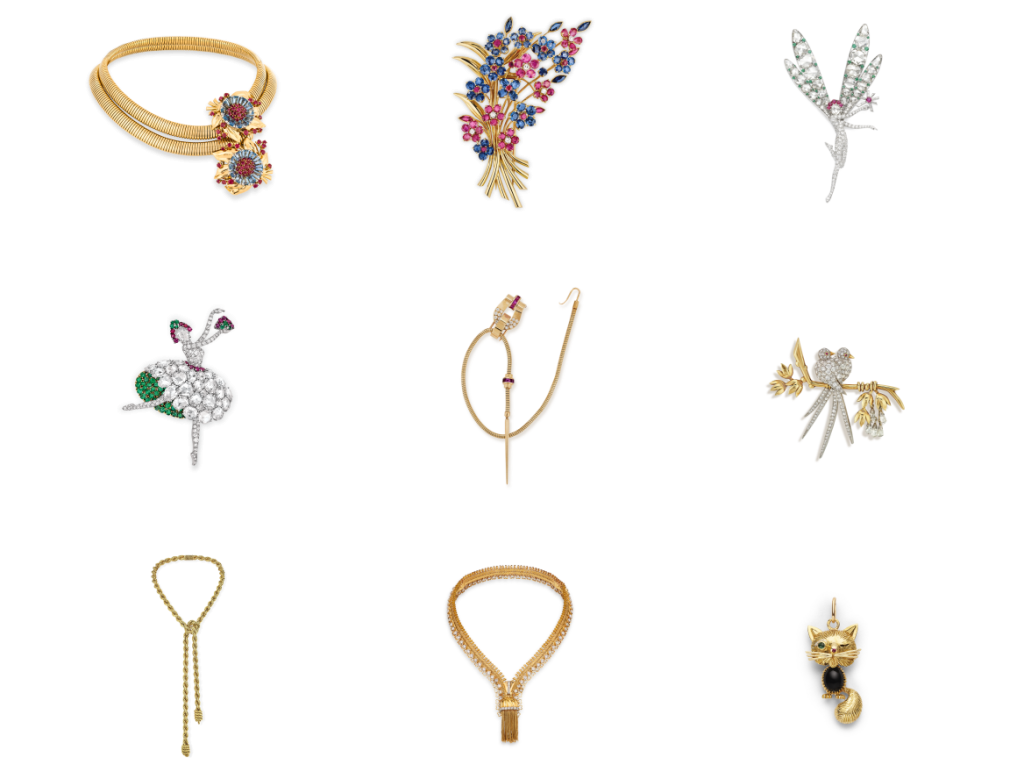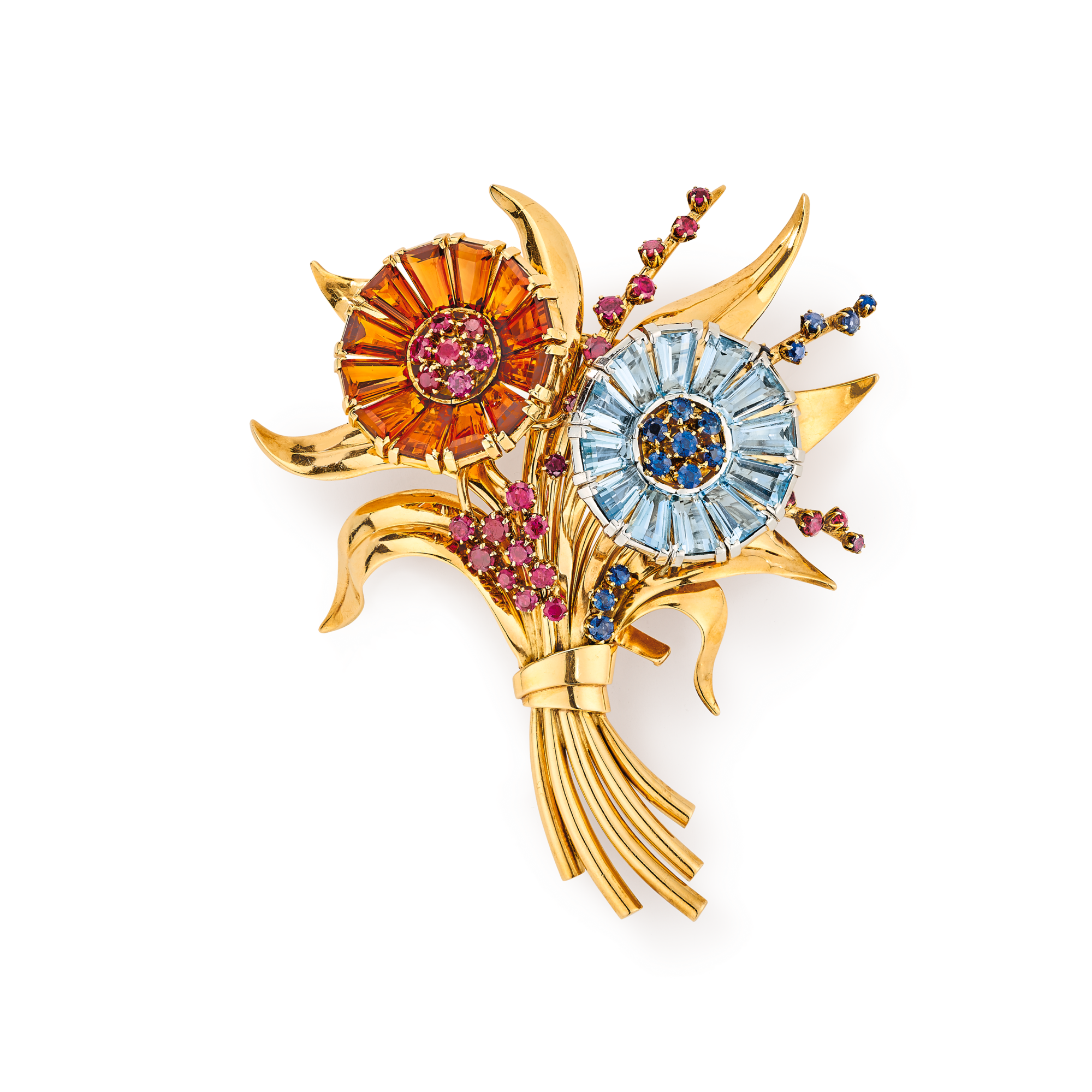
Bouquet de fleurs clip
Creation details
- Creation year 1938
- Usage Clip
- Dimensions 82 × 69 mm.
This Bouquet de fleurs clip, with a return to more traditional jewelry that was seen in the late 1930s is combined here with the Art Deco style, heralding a new style that was to prevail in the following decade.
Two flowers are tied in a bunch, together with some branches and leaves of polished yellow gold. The center of one of the flowerheads is pave-set with claw-set rubies and the other with claw-set sapphires, with stylized petals of topaz and aquamarine radiating out from them respectively. The yellow-gold branches are covered in buds of claw-set round rubies and sapphires.
Le retour au style figuratif
The bouquet of flowers motif made into a brooch came back into fashion in the late 1930s, where it remained until well into the following decade. Jewelry art at that time thus displayed a “style that looked to nature again.”1Anonymous, “Fleurs et reliefs,” Vogue (August 1936): 21. Following on from “the stern elegance,” and “geometric [and] abstract pieces”2Anonymous, “Bijoux nobles reflets,” Album de la mode du Figaro, no. 1 (Winter 1942–1943): 70. of the 1920s, there was a gradual reemergence of the figurative. While Art Deco jewelry had not totally done away with floral motifs, the latter were once again most definitely center stage.
A historizing floral iconography
The bouquet theme, inherited from eighteenth- and nineteenth-century devant-de-corsage and cascading brooches, was part of the historicist trend that characterized the jewelry arts and fashion in the late 1930s and 1940s. The so-called “romantic” style3Anonymous, “La soie pour le soir,” Très Parisien, no. 6 (1935): 10. of the 1930s brought back the low-cut necklines of the Second Empire4Anonymous, “L’appel des vacances,” Très Parisien, no. 6 (1935): 19. as well as bodices from the 1830s worn over full-skirted “robes de style.”5Anonymous, “La soie pour le soir,” Très Parisien, no. 6 (1935): 10.
The permanence of the Art Deco stylization
These references to fashions of the past were nonetheless tempered by a persistent degree of stylization typical of Art Deco. Here, for instance, the petals are created from a single stone with rectilinear contours rather than pave-set with gems to look more natural. Furthermore, platinum, popular since the late-nineteenth century but rather cold to the eye, began to give way to “the brilliance [and] warmth [of yellow] gold,”6Anonymous, “Bijoux nobles reflets,” Album de la mode du Figaro, no. 1 (Winter 1942–1943): 70.. Henceforth, the jeweler’s herbarium employed a wide range of colors.
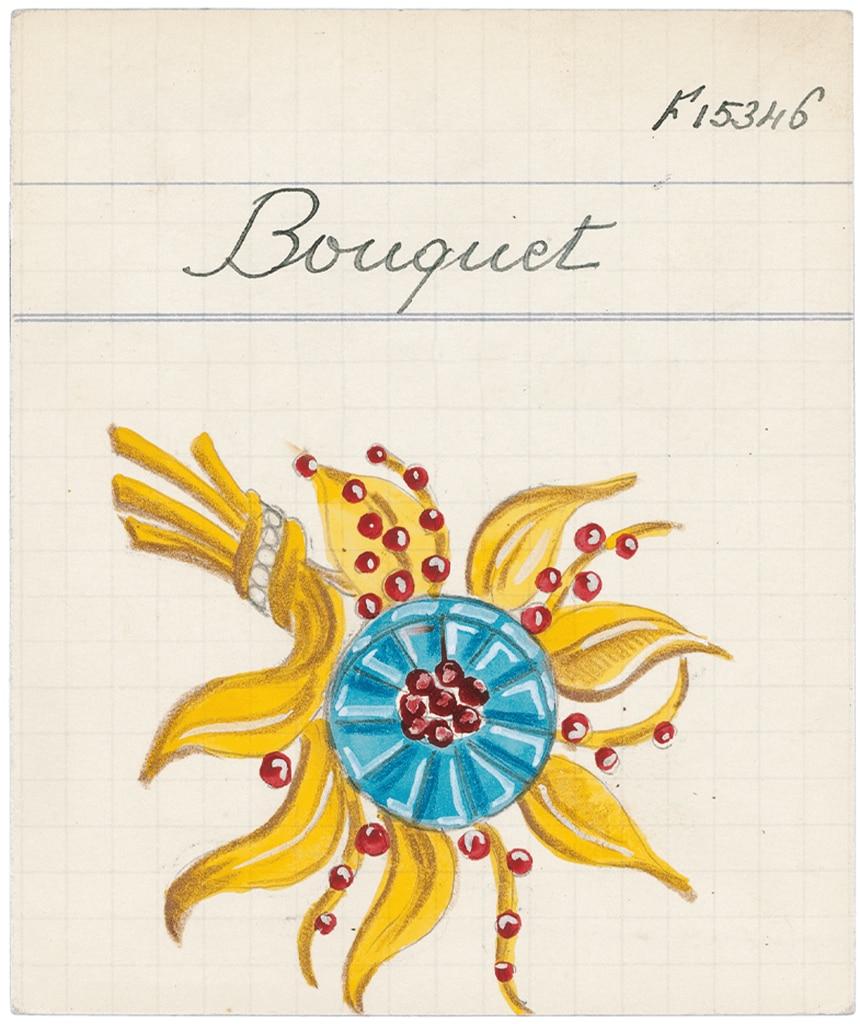
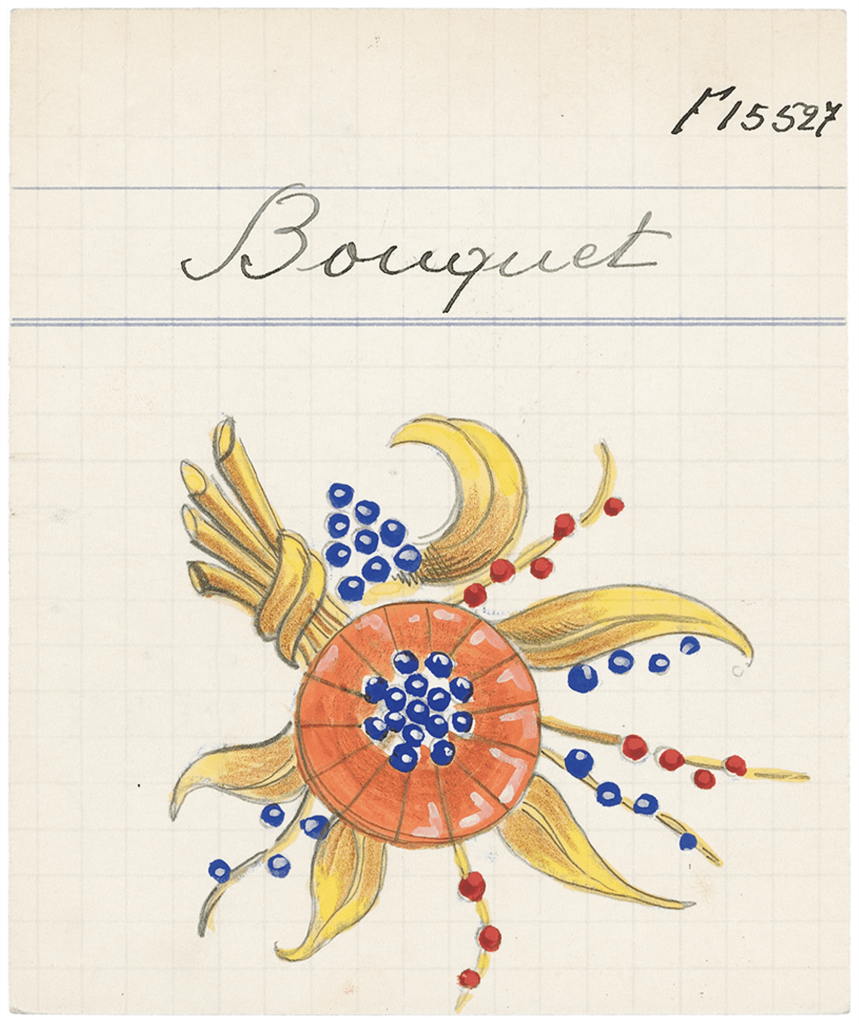
To go deeper
